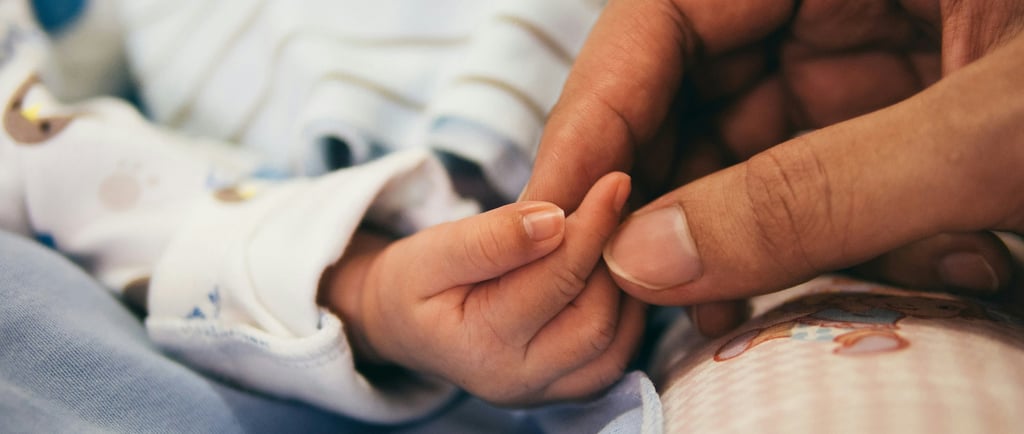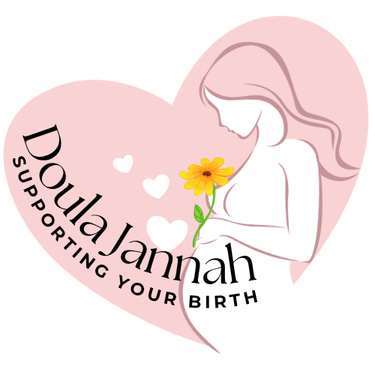Baby is head down; what’s next?
A Guide to Optimal Fetal Positioning (OA vs OP)
5/8/20244 min read


Hello, mamas-to-be! So you’ve been told your baby is head-down—hooray for that major milestone! 🎉 But before you pop the celebratory bubble bath, let’s talk about what comes next. Because while “head-down” is great news, it’s not the whole story. Enter: optimal fetal positioning .
If you’re scratching your head wondering, “Wait, there’s more?”—don’t worry. You’re not alone. Many moms don’t realize that how your baby is positioned in those final weeks can make a big difference in labor and delivery. Today, we’re diving into the world of OP and OA babies, why it matters, and how you can encourage your little one to get into the best position for birth. Spoiler alert: It’s easier than teaching your toddler to share their snacks.
What Are OP and OA Babies?
First, let’s break it down with some anatomy 101. When we say a baby is head-down, we’re talking about the presentation. But within that presentation, there are different positions based on which way your baby is facing. Here’s the scoop:
OA (Occiput Anterior):
This is the “gold standard” position. In an OA position, your baby’s back is toward your belly, and their face is pointing toward your spine. Think of it like your baby is giving you a big ol’ hug from the inside. This position allows for smoother labor because the smallest part of their head (the crown) leads the way through the birth canal.OP (Occiput Posterior):
Also known as “sunny-side up,” an OP baby is head-down but facing forward, with their back toward your spine. Their face might be looking outward instead of inward. While this position isn’t uncommon, it can sometimes lead to longer, trickier labors because the wider part of their head has to navigate the pelvis first.
Fun fact: About 20-30% of babies start labour in the OP position, but most will rotate to OA during labor. However, if they don’t, it could mean more back pain (hello, “back labour”) or even interventions like vacuum extraction or cesarean sections.
Why Does Fetal Positioning Matter?
You might be thinking, “Isn’t my uterus just going to handle all of this?” Well, yes and no. Your body is amazing, but it works best when your baby is in an optimal position. Here’s why positioning matters:
1. Easier Labor Progression:
An OA baby tends to move through the pelvis more smoothly, reducing the chances of prolonged labor or getting “stuck.”
2. Less Back Pain:
OP babies are notorious for causing intense back pain during contractions because the hard part of their skull presses against your spine. Ouch!
3. Lower Risk of Interventions:
Babies who stay in the OP position are more likely to need assistance during delivery, such as forceps, vacuums, or C-sections.
4. Better Recovery for Mom:
Smoother births often mean faster recoveries. And who doesn’t want that?
How Can You Encourage Optimal Positioning?
The good news? There’s plenty you can do to help your baby settle into the ideal OA position. Here are some tried-and-true tips:
1. Stay Active
Movement is your secret weapon! Walking, swimming, and prenatal yoga aren’t just great for your physical health—they also give your baby room to wiggle into the right spot. Gravity is your friend here, so aim for activities that keep you upright rather than lounging on the couch all day. Try YOGA or Pilates! Do the Cat Cow pose everyday.
2. Try Spinning Babies Techniques
Spinning Babies is a fantastic resource for encouraging optimal positioning. Some simple exercises include:
Forward-leaning inversions: Get on your hands and knees, then gently lower your chest toward the floor while keeping your hips elevated. This helps create space in your pelvis.
Side-lying releases: Lie on your side with pillows supporting your belly and legs to relax tight ligaments.
Pelvic tilts: Rock your pelvis back and forth while on all fours—it’s like a mini dance party for your uterus!
3. Pay Attention to Posture
Sitting slouched on the couch or leaning backward can encourage your baby to settle into the OP position. Instead, sit upright with your knees lower than your hips. Using a cushion or birthing ball can help maintain good posture.
4. Use a Rebozo or Scarf
A rebozo (a long, woven scarf) can be used to gently jiggle your belly and encourage your baby to shift positions. Ask your doula or midwife to show you how—it’s like a spa treatment for your uterus!
5. Sleep Strategically
Sleeping on your left side is often recommended because it improves blood flow to your baby. Plus, lying on your side gives your baby more room to rotate.
6. Chiropractic Care
Prenatal chiropractors specialize in techniques like the Webster Method, which can help align your pelvis and create more space for your baby to move into an optimal position. Many mamas swear by this!
What If My Baby Stays OP?
Don’t panic if your baby seems to prefer the sunny-side-up life. Plenty of OP babies still have smooth deliveries, and many will rotate to OA during labor. However, if you suspect your baby is staying OP, here’s what you can do:
1. Stay calm and trust your body.
Labor hormones and contractions often encourage rotation naturally. Your body knows what to do—even if it takes a little extra time.
2. Use Movement During Labor:
Changing positions frequently during labor can help guide your baby into the right spot. Squatting, kneeling, or using a birthing ball can work wonders.
3. Consider counter-pressure:
If you’re experiencing back labor, counter-pressure techniques (like having your partner press firmly on your lower back during contractions) can provide relief.
Teamwork Makes the Birth Dream Work
Mama, remember this: You and your baby are a team. While optimal fetal positioning can make labour smoother, it’s not the only factor that determines your birth experience. Trust your instincts, stay informed, and lean on your support system—whether that’s your partner, doula, or doctor.
And hey, if your baby decides to stay sunny side up (i.e., baby facing your tummy)? That’s okay too. Every birth story is unique, and yours will unfold exactly as it’s meant to. After all, whether they’re OA or OP, the end goal is the same—a healthy baby in your arms.
P.S. Have questions about fetal positioning or other birth-related topics?
Drop me a comment—I’d love to chat!
